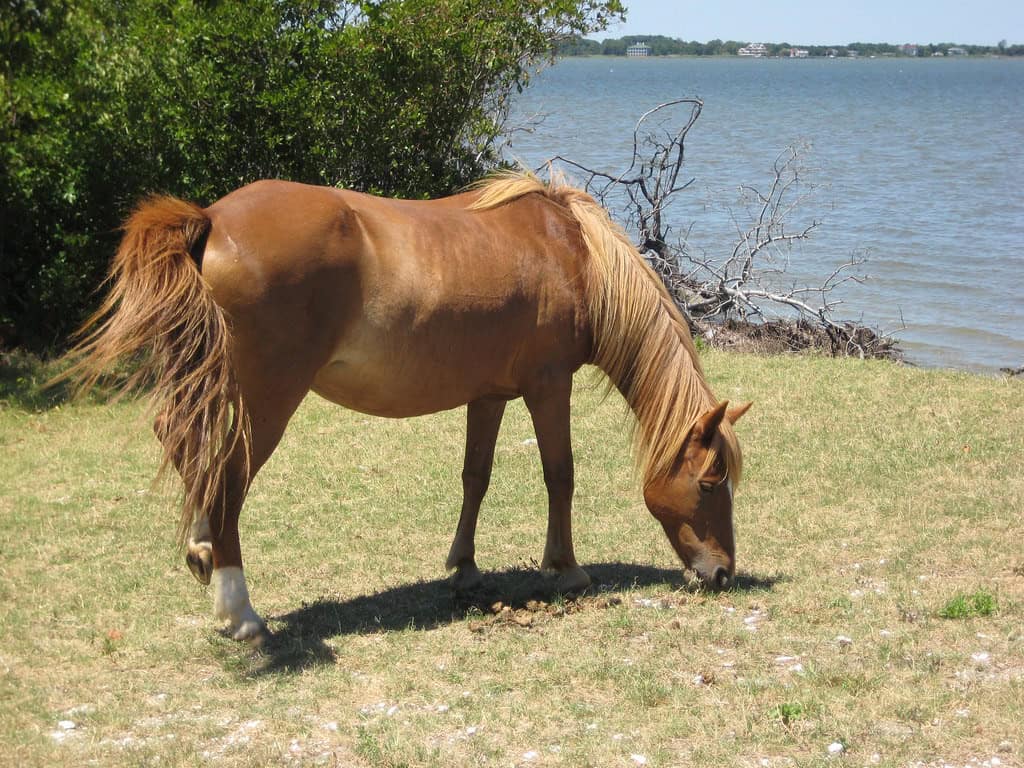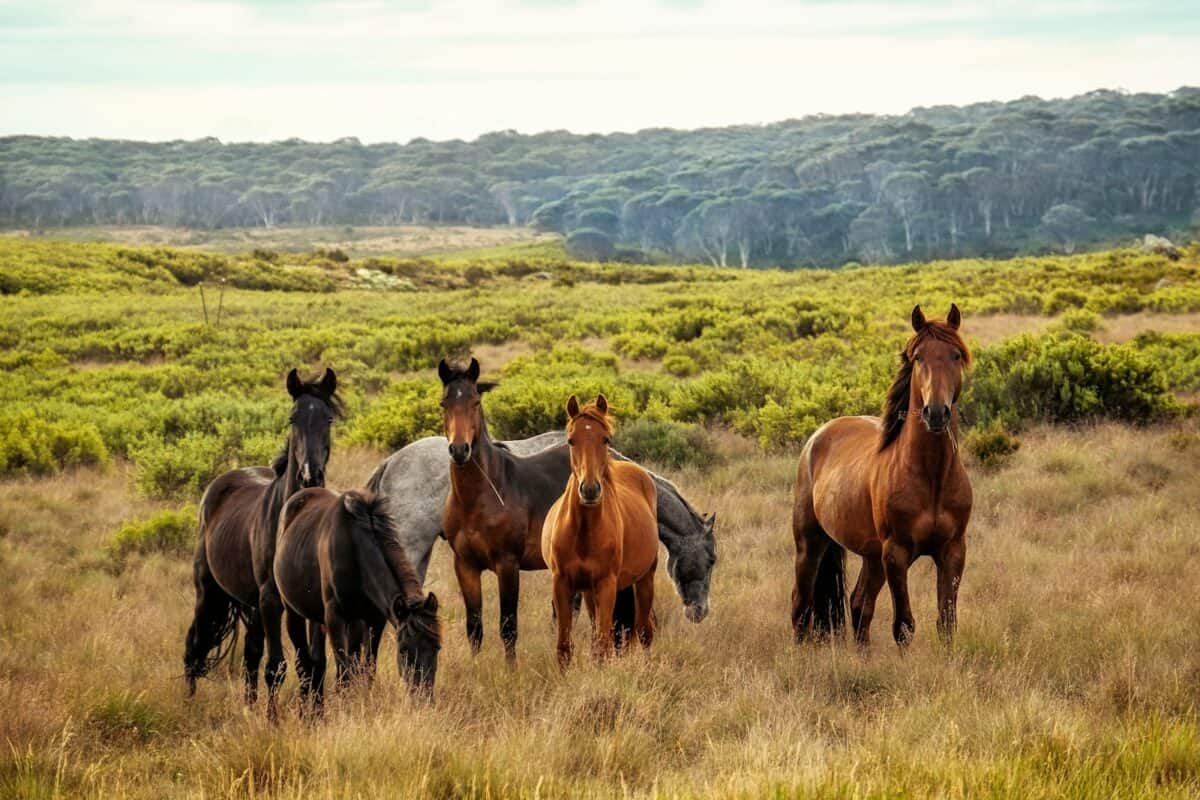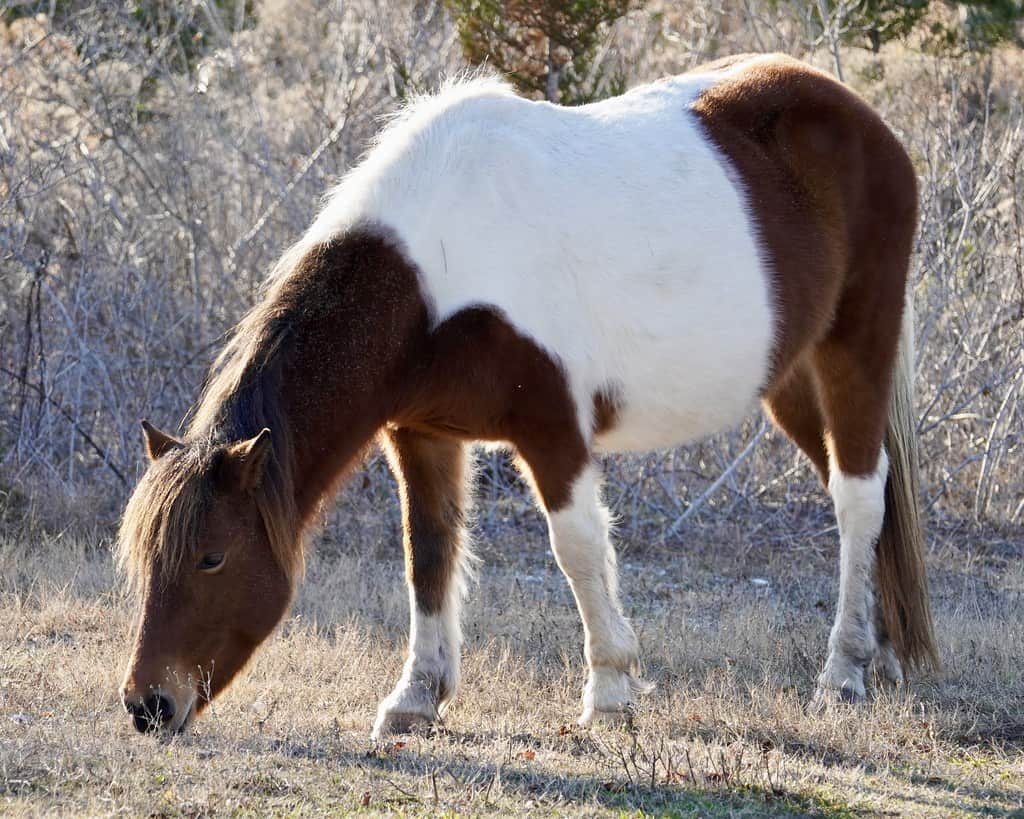Horses are intelligent, social animals that thrive on stimulation and interaction. In the wild, horses spend up to 16-18 hours a day foraging, traveling, and engaging with their herd members. In domestic settings, however, they often lack these natural outlets for their physical and mental energy. Understanding when your horse is experiencing boredom is crucial for their wellbeing, as prolonged boredom can lead to behavioral issues, health problems, and a diminished quality of life. Here’s how to recognize if your equine companion might need more enrichment in their daily routine.
11. Repetitive Behaviors and Stereotypies

One of the most obvious signs of equine boredom is the development of stereotypic behaviors, commonly known as stable vices. These repetitive, seemingly purposeless movements develop as coping mechanisms when horses lack adequate mental stimulation or have limited ability to express natural behaviors. Common stereotypies include cribbing (where horses grip onto a surface with their teeth and suck in air), weaving (swaying side to side), box walking (pacing continuously around the stall), and wind-sucking (gulping air without gripping a surface).
Research from the Journal of Veterinary Behavior indicates that horses kept in conventional stabling systems where they spend more than 20 hours per day in stalls are significantly more likely to develop these behaviors. Once established, these patterns can be extremely difficult to eliminate completely. They’re not just annoying habits—they’re serious indicators that your horse’s environment is not meeting their psychological needs and can lead to physical health issues like weight loss, dental problems, and colic.
10. Wood Chewing and Destruction

When horses become bored, they often resort to chewing on whatever they can find in their environment. If you notice your horse has suddenly developed a habit of chewing on wooden fences, stall doors, or other structures, this may be a sign they’re seeking something to occupy their time and jaws. Unlike cribbing, which is a true stereotypy, wood chewing is considered a redirected behavior—your horse is attempting to satisfy their natural urge to forage and chew for extended periods.
Horses evolved to spend the majority of their day grazing, which involves constant chewing and movement. When confined to a stall with limited forage, this natural behavior gets redirected to the available wooden structures. Not only is this destructive to your property, but it can also pose health risks if the horse ingests paint, preservatives, or splinters. Providing more forage opportunities through slow-feeders or multiple hay stations can significantly reduce this behavior.
9. Excessive Nickering and Calling

Horses are herd animals with strong social needs. A bored and lonely horse will often vocalize excessively, calling out to other horses or even humans. If your horse starts nickering or whinnying more frequently than usual, particularly when they’re alone, they may be expressing frustration with their isolated state. These vocalizations essentially say, “I’m here alone, and I don’t like it!”
Studies have shown that horses stabled individually with limited visual contact with other horses have higher stress levels, as measured by cortisol concentrations in their blood. The natural equine social structure involves close physical proximity, mutual grooming, and constant low-level interaction with herdmates. When deprived of these interactions, horses often become vocal as they attempt to locate or connect with companions. Providing a suitable equine companion or at least ensuring your horse has visual and preferably physical contact with other horses can alleviate this symptom of boredom.
8. Aggression or Grumpiness

A sudden change in your horse’s temperament can be a telling sign of boredom. Horses that were previously even-tempered may become irritable, pin their ears back more frequently, or display aggressive behaviors like biting, kicking, or threatening postures. This shift in demeanor often indicates that your horse is frustrated with their environmental conditions and lack of mental stimulation. Just as humans can become cranky when bored, horses express their discontent through their body language and interactions.
It’s important to rule out pain or illness as a cause of behavioral changes before attributing them to boredom. However, if your veterinarian has cleared your horse medically, consider whether their living conditions provide adequate stimulation. Horses evolved to move freely across varied terrain while making constant decisions about where to go, what to eat, and how to interact with herdmates. When these choices are removed from their lives, the resulting frustration can manifest as aggression toward handlers or other horses.
7. Lethargy and Dullness

While some bored horses become hyperactive or destructive, others shut down and display signs of lethargy or depression. A typically energetic horse that suddenly seems dull, unresponsive, or disinterested in their surroundings may be suffering from chronic boredom. You might notice your horse standing in the corner of their stall with a lowered head, dull eyes, and minimal reaction to things that would normally engage them. This withdrawn behavior represents a form of learned helplessness where the horse has essentially given up on finding stimulation in their environment.
Research in equine cognition suggests that horses, like other intelligent animals, experience emotional states similar to depression when kept in unstimulating environments for extended periods. A 2017 study published in PLOS ONE found that horses showing these withdrawn postures had lower responsiveness to external stimuli and physiological indicators consistent with chronic stress. This state not only reduces quality of life but can also compromise immune function and overall health. Regular turnout, companionship, and varied activities can help revive a horse suffering from this type of boredom-induced lethargy.
6. Fence Walking and Pacing

Horses confined to small paddocks or fields who repeatedly walk along fence lines are often displaying another sign of boredom and frustration. This behavior, sometimes called fence walking or track making, creates worn paths along boundaries and can indicate that your horse feels restricted and understimulated. The repetitive movement serves as a way to burn excess energy and cope with the limitations of their environment. In some cases, the horse may be attempting to reach companions in adjacent fields, expressing their desire for social interaction.
Unlike natural grazing movement, which involves slow, meandering progress across varied terrain, fence walking is typically characterized by a consistent pace and repetitive route. This behavior can lead to uneven hoof wear, muscle development issues, and in extreme cases, lameness from continually traveling on the same track. Providing a more complex environment with multiple feeding stations, natural obstacles, or varied terrain can help break this pattern by giving horses more to engage with in their turnout area.
5. Excessive Sleeping During Daytime

While horses do take short naps during daylight hours, a horse that spends an unusual amount of time sleeping during the day may be doing so to pass time due to boredom. In natural settings, horses spend the majority of their waking hours engaged in foraging, socializing, and exploring their environment. When these activities are limited, sleep can become a default state to escape the monotony of their surroundings. This is similar to how humans might take a nap simply because they have “nothing better to do.”
It’s important to distinguish between normal equine rest patterns and excessive daytime sleeping. Healthy horses typically take short standing naps throughout the day, with brief periods of REM sleep while lying down. A bored horse may lie down more frequently or for longer periods during daylight hours when they would normally be active. Providing more mental and physical stimulation through varied turnout environments, training sessions, or enrichment activities can help normalize their sleep patterns and improve their overall engagement with life.
4. Overexcitement When Handled

If your normally calm horse suddenly becomes excessively excited or reactive when you come to handle them, this could be a sign they’re desperately seeking stimulation. A bored horse often greets any change in routine with disproportionate enthusiasm, treating even mundane interactions as major events. You might notice your horse rushing to the gate when you appear, becoming fidgety during grooming, or displaying unusual energy during typically calm activities.
This overexcitement stems from the anticipation of relief from the monotony of their daily existence. From the horse’s perspective, your arrival represents the possibility of interaction, movement, and engagement—all things they’re lacking in their current environment. While enthusiasm for human interaction can be positive, extreme reactions indicate an imbalance in the horse’s life. Implementing a more consistent schedule of varied activities, including groundwork, riding, liberty work, and social turnout, can help normalize their reactions by ensuring they regularly receive adequate stimulation.
3. Unusual Eating Patterns

Changes in eating habits can be a subtle but significant indicator of boredom in horses. You might notice your horse gulping down hay rapidly when it’s provided, then spending hours without anything to eat. Alternatively, some bored horses develop unusual eating behaviors like playing with their feed, sifting through it selectively, or even eating bedding or dirt. These behaviors reflect the horse’s attempt to extend eating time or find alternative sources of oral stimulation when their natural grazing pattern is disrupted.
In natural settings, horses spend 16-18 hours per day consuming small amounts of forage continuously. Their digestive systems are designed for this constant intake of fibrous material. When meals are restricted to two or three times daily, horses not only experience long periods without the mental engagement of foraging but may also suffer digestive discomfort. Slow feeders, forage nets with small holes, and multiple feeding stations can help extend eating time and provide more natural grazing behavior, addressing both the psychological and physiological needs of your horse.
2. Excessive Weight Gain

A bored horse with limited exercise opportunities but adequate food supply will often gain excess weight. This is particularly common in easy-keeping breeds like ponies, Morgans, or draft crosses. Without the natural movement that would accompany foraging in the wild, domesticated horses can consume their daily caloric requirements without expending equivalent energy. The resulting weight gain isn’t just a cosmetic issue—it significantly increases the risk of metabolic disorders like insulin resistance, laminitis, and equine metabolic syndrome.
Research published in the Equine Veterinary Journal has shown that horses maintained in paddock or stall environments without regular exercise typically move less than 1 mile per day, compared to free-ranging horses that may travel 10-15 miles daily. This dramatic reduction in activity level, combined with boredom-induced eating behaviors, creates the perfect conditions for unhealthy weight gain. Implementing a regular exercise program, using slow-feeding methods, and creating environments that encourage movement (such as track systems or paddock paradise setups) can address both the boredom and weight management issues simultaneously.
1. Excessive Grooming Behaviors

Horses sometimes develop excessive self-grooming habits when bored, which can manifest as rubbing against objects until hair is worn away, excessive rolling, or even chewing on their own body parts. While some grooming is normal and necessary, obsessive grooming behaviors indicate frustration and lack of appropriate outlets for energy and natural behaviors. In extreme cases, these behaviors can lead to skin irritation, hair loss, or self-inflicted wounds.
Without the varied sensory experiences of a natural environment, horses may seek increased tactile stimulation through these repetitive grooming behaviors. In the wild, horses would experience different textures underfoot, brush against various plants, and engage in mutual grooming with herdmates. Domestic horses with limited environmental complexity may compensate through these exaggerated grooming patterns. Providing appropriate scratching posts, regular grooming sessions, companionship for mutual grooming, and varied textures in their environment can help satisfy these tactile needs.
Conclusion: Combating Equine Boredom Solutions and Prevention

Recognizing the signs of boredom in your horse is just the first step—taking action to enrich their environment is crucial for their wellbeing. The most effective approach combines increased turnout time, social interaction with other horses, dietary management that promotes natural foraging behavior, and varied mental stimulation. Consider implementing track systems that encourage movement, rotating pastures to provide new environments to explore, or introducing safe natural obstacles like logs and mounds to create more interesting turnout spaces.
Regular training sessions that challenge your horse mentally, not just physically, can provide valuable stimulation. This might include liberty work, obstacle courses, trail riding on varied terrain, or learning new skills. Even simple enrichment toys like treat balls, hanging objects, or sandbox areas can provide novel experiences. Remember that horses evolved to live in complex social and environmental settings, making daily decisions and processing diverse sensory information. Our responsibility as caretakers is to recreate this complexity as much as possible within domestic settings, preventing boredom before it leads to behavioral or health issues.
- 11 Signs Your Horse Might Be Bored - August 9, 2025
- Jurassic World Dominion Dinosaurs - August 9, 2025
- 11 Signs a Rhino Is About to Charge - August 9, 2025

